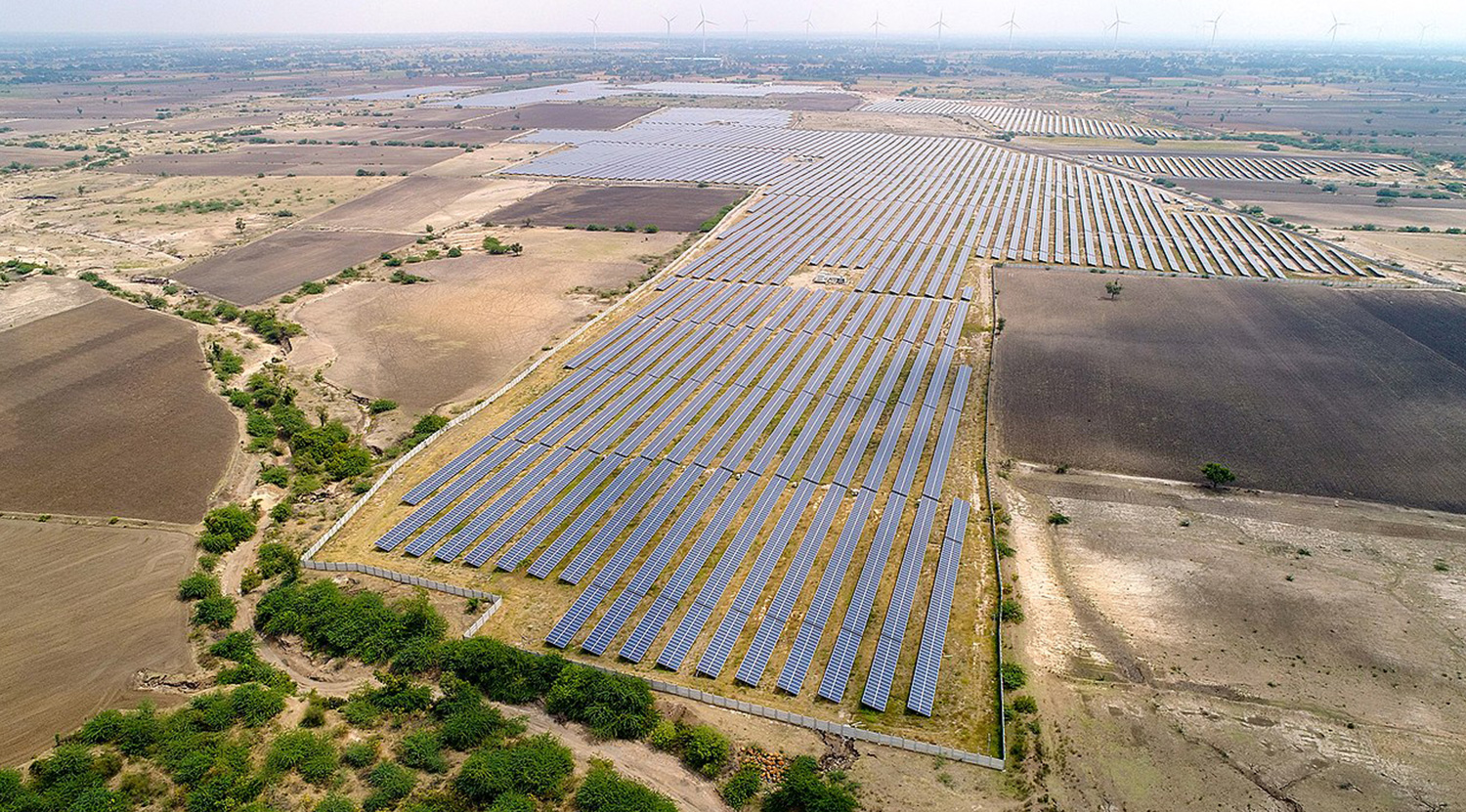Reduce air pollution to avoid land conflicts due to solar projects, recommends study

- Due to high air pollution, India is witnessing an estimated loss of US$ 245-835 million every year. Improvement in air quality will in turn improve the performance of the solar power projects, says a study.
- According to the researchers who conducted the study, cleaner air and better performance of solar power projects would also mean that India could save a crucial resource like land by which conflicts with communities and the environment could also be avoided.
- The study also said the assessment of solar resources should be incorporated while conducting the cost-benefit analysis of any air pollution mitigation plans in India.
If India can reduce its air pollution problem, it will not only improve the performance of its solar power projects and accelerate India’s clean energy transition but would also result in saving crucial resources such as land, a study has revealed. With more efficient performance of solar power projects, India could meet its targets with lesser installation capacity and that translates into a lower land requirement for large-scale solar parks which in turn reduces chances of conflicts with the local communities and the environment.
In 2015, India had set a target of installing 175 gigawatts (GW) of renewable energy projects including 100 GW of solar power by 2022. So far, India has achieved an installed capacity of 50.77 GW. The government of India maintains the country is on track to achieve the target as many projects are under construction and would soon be commissioned. In fact, buoyed by the rapid progress of its renewable energy target, India is now pursuing a target of 450 GW of renewable energy projects including about 280 GW of solar projects.
The recent study by researchers from the Indian Institute of Technology (IIT), Delhi, highlighted that “India lost 29 percent of its utilisable global horizontal irradiance potential due to air pollution between 2001 to 2018”. It estimated the financial loss due to air pollution to the tune of US$ 245-835 million every year.
The study noted that the “loss of solar energy due to environmental factors like air pollution is not properly considered in renewable energy resource assessment” and said, “successful implementation of the National Clean Air Program (NCAP) and complete mitigation of household emissions through the supply of cleaner fuel for domestic use and rural electrification would allow India to generate a surplus of 6-16 TWh per year electricity from the existing solar power installed capacity in 2018.”
“This translates to an economic benefit of 325-845 million USD annually, which is equivalent to the implementation costs of these social programs. Mitigating air pollution would therefore accelerate India’s progress to achieve its solar energy target at a lesser installation capacity, avoiding additional expenditure for the expansion of solar energy infrastructure,” said the study.
According to the study, aerosols in the atmosphere attenuate incoming solar radiation through scattering and absorption and this is known as the “atmospheric attenuation effect.” In addition, aerosols often get deposited over panel surfaces and affect their PV performances, which is termed as “soiling effect.”
The study’s corresponding author Sagnik Dey, Institute Chair and Coordinator at Centre of Excellence for Research on Clean Air (CERCA), IIT Delhi, said most of the large scale solar parks in India are developed “on land that is categorised as barren or wasteland” in distant parts of the country because large land parcels are not available in many densely populated areas.
“For instance, in northern India, a highly polluted and densely-populated region, the land isn’t easily available for large solar projects. This is the region, where the population is facing a high impact of air pollution. So, if we are able to improve air quality, we can generate surplus energy from the same set of solar assets. Moreover, by minimising air pollution, we can avoid land conflicts due to large-scale solar projects,” Dey told Mongabay-India.
Sunil Dahiya, an analyst with the Centre for Research on Energy and Clean Air (CREA), an independent research organisation, working on clean air and clean energy, also noted that there is a clear connection between clean air and better performance of solar power projects.
“High air pollution translates into low efficiency of solar power projects which leads to higher auxiliary power consumption (use of robots for cleaning the panels), or an increase in the use of water for cleaning the panels. What we need to understand is that if we are able to ensure better air quality, it would mean higher efficiency of solar power projects. If that happens, it can lead to a lower requirement of space to generate the amount of electricity targeted by India and this will help in avoiding land conflicts with the communities,” Dahiya told Mongabay-India.
Cleaner air to save resources
The study said that in east and south Asia, air pollution is on the rise, and hence the impacts of aerosols on solar energy potential need to be addressed while undertaking new solar expansion exercises over countries such as China and India. A 2020 study had estimated more than 50 percent reduction in solar power by aerosols over highly polluted regions such as northern India, northern China, and global desert regions.
In their study, the IIT Delhi researchers estimated the surplus solar energy that India would be able to generate and economic benefits it can reap if air pollution levels in the country are reduced successfully by strictly implementing some of the major mitigation policies announced by the government of India or by meeting the World Health Organization’s (WHO’s) air quality norms.

The researchers held that India’s solar energy goal can be realised on time, even earlier, if the current installation trend has been followed along with the air pollution mitigation plans.
“Mitigating air pollution would also reduce cloudiness, which in turn would further enhance solar power production. In addition to that, precipitation is inhibited in polluted clouds. Thus, if pollution is reduced, it could be hypothesised that increased precipitation would lead to more wet scavenging and even further reduction in the aerosols present in the atmosphere and thus increase solar power generation,” said the researchers while noting that the actual benefit of reducing air pollution could be much higher in India than what is reported in this study.
Sagnik Dey explained that by achieving clean air targets, India will be able to save a lot of money that otherwise would be spent on the health of people facing pollution.
“It is a loop – reducing air pollution can help in better solar energy production which can reduce the dependence on fossil-fuels (thermal power) which would then ultimately cleaner air and better health of people. You know, in 2019, air pollution had cost India nearly 1.3 percent of its GDP. If we are able to ensure better air quality, it is a win-win situation for everyone,” he said.
Dey pressed that when resource assessment is done for solar power projects, the power developers need to take into account the air pollution factor to calculate the actual solar radiation available for their projects.
According to the study, the economic benefit of reducing air pollution in terms of excess solar power generation is equivalent to the current implementation cost of the major air pollution mitigation policies and thus, it said, the assessment of solar resources should be incorporated while conducting the cost-benefit analysis of any air pollution mitigation plans in India.
“Our analysis delineates that air pollution mitigation actions have prominent potential to reinforce solar energy generation in India. Therefore, designing new policies targeting the control of individual aerosol species can be assessed in the future. The penetration and adoption of solar renewables through increasing usage of different solar appliances such as solar lanterns, solar heaters, solar cookers, and other allied non-carbon products, and enhanced production of solar energy would reduce India’s dependency on coal for power generation. This is likely to further accelerate the reduction in air pollution across the country,” the study noted.
This article first appeared on Mongabay.







